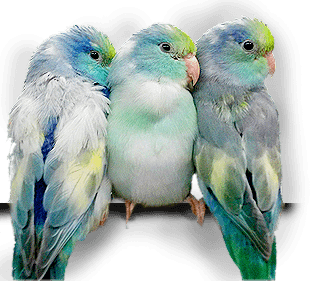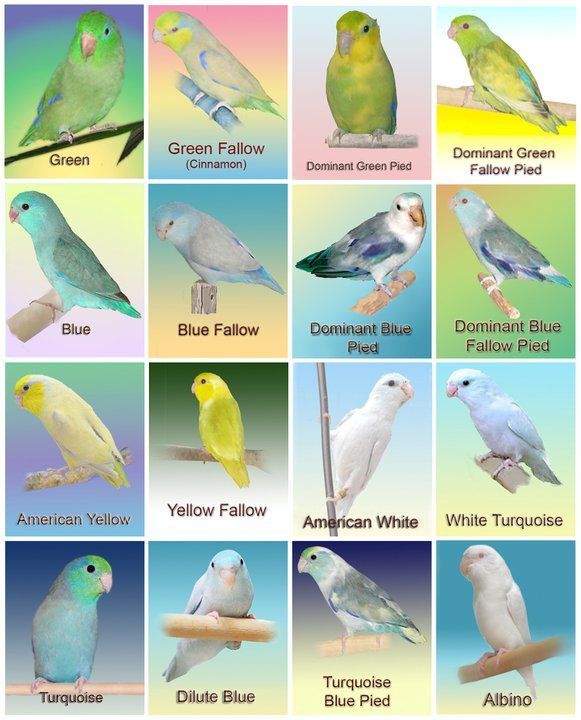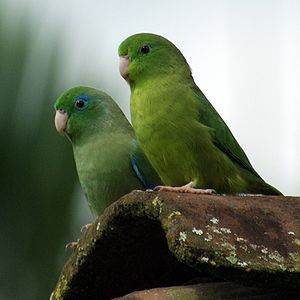| Parrotlet Resources |
/ date added |
|
Parrotlet Information
Care, Diet, Breeding
& Medical Info |
Emergency Bird
Care Tips |
| Parrot Egg IncubationFinding an Avian “Bird” Vet |
Bird Disaster Kit
Great Links |
|
| News & Interesting Articles – WebPages / date added |
|
The Parrotlets Film Project –
A short documentary about Parrotlets
. |
|
Parrot Documentary Films / 4-15
|
| /3-15 |
| How do birds sleep on one leg / How does a birds foot work? /2-15 |
| /1-15 |
| /1-15 |
| /1-15 |
| /1-15 |
| /1-15 |
|
/6-14
|
| DNA Sexing Information – Bird DNA Testing /11-12 |
|
| Medical & Illness / date added |
|
| Egg Binding – Treatment & Help / 3-15 |
| Bee Pollen Use For Birds /2-15 |
| /1-15 |
| /4-13 |
|
Megabacteria Avian Gastric Yeast (AGY) /6-14
Also called: The Going Light Sickness
The name implies a very large bacteria , large yes because the cigar shaped organisms are almost twenty times the size of most common bacteria but new evidence suggest it is a fungus and not a bacteria as first thought. As a result of these new findings it was renamed and is now called Avian Gastric Yeast or AGY for short. It is believed by most Avian Veterinarians now believe that as much as 75% of all birds carry this fungus at all times in the crop or digestive system. Only under certain conditions does it become overly active and cause a problem. Each year we learn more information about this illness and different ways of treating it. I have taken precaution and preventatively treated my flock over the years using Sodium Benzoate. Below are some links with good information about this disease and how to treat it.
More Info Links
From my experience and after working with other breeders who were dealing with this illness I am convinced that Sodium Benzoate is a very effective treatment and cure. As of now we do not have any standard dosage instructions and most resources will tell you to treat the bird or aviary 4 to 6 weeks. However I know for fact that only after 10 to 14 days of treatment the AGY can be cured and no longer detected by test. When treating my flock I use the below dosage of Sodium Benzoate mixed with spring or distilled water.
The symptoms of AGY are:
“going light” – chronic wasting, fluffed up, vomiting, prominent keel bone, increased hunger, large droppings and a pasted vent. Secondary changes can also occur in the liver as the bird becomes anorexic.
Alternative Treatment
– check with your vet before starting any medications –
Per 1 US Gallon of Water
If treating for 30 days
First 5 to 7 days
2 teaspoons of Sodium Benzoate per gallon
After 5 to 7 days I used 4 teaspoons of Sodium Benzoate per 1 gallon of water for the remaining time. Starting out with only 2 tsp for the first 5 to 7 days allows the birds to get used to the taste of the water. Almost everything I read online said to treat your birds for 30 days – so that is what I did. However after only 10 days of treatment the AGY has been known to be totally cured and non detected with follow up tests from the vet. Do your online research, check with your bird doctor and watch your birds closely. Do not use on birds that are breeding or that are feeding chicks, Breeding birds tend to drink alot more water causing them to get to much of the medication. This can result in death. Information online suggested using half dosage if you must treat breeding birds or birds that are feeding chicks.
You can order the Sodium Benzoate from Pronto Foods Co.
312-733-0000
Make sure to ask for the 99% pure Sodium Benzoate |
 Parrotlets for Sale
Parrotlets for Sale All Babies
All Babies Parrotel Live Video
Parrotel Live Video Lineolated Parakeets
Lineolated Parakeets English Budgies
English Budgies Parrotlet Color Mutations
Parrotlet Color Mutations Spectacled Parrotlets
Spectacled Parrotlets